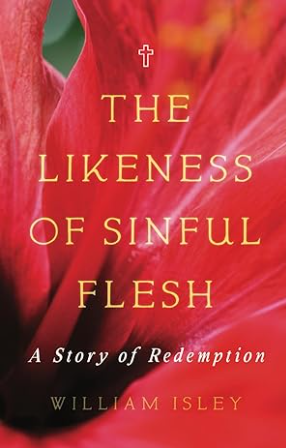The lion and the lamb are two of the most important biblical images of Christ. Obviously, the lion depicts Christ’s power and the lamb his loving sacrifice for us sinners. Nevertheless, we fail to do justice to these images, if we do not see how the Bible relates them to one another. Two Christian novelists, C. S. Lewis and Charles Williams, can help us to grasp the profundity of the biblical portrayal of Christ as both lion and lamb or better be grasped by it.[1]
At the end of Lewis’s The Voyage of the Dawn Treader Edmund, Lucy, and Eustace encounter a lamb.[2] During the conversation, the lamb is transformed into the lion Aslan, who is how Lewis imagines Christ in the world of Narnia. In his description of this meeting Lewis alludes several times to chapter 21 of the Gospel of John. The image of the lamb is central to John’s Gospel. For example, John the Baptist proclaims Jesus to be “the Lamb of God, who takes away the sin of the world” (John 1:29). In Narnia the lamb invites the children “Come and have breakfast,” just as Jesus invites his disciples (John 21:12). In both, the breakfast takes place by the water and consists of roasted fish.
Two details of Lewis’s narrative are quite striking, both of which give a certain priority to the lamb. First, the children, whose eyes had become adjusted to looking into the sun as they sailed west, were at first unable to make out the lamb. Lewis writes, “… there was something so white on the green grass that even with their eagles’ eyes they could hardly look at it.”
Remembering the background from the Gospel of John and Aslan’s redemptive death in The Lion, the Witch and the Wardrobe, the lamb for Lewis represents Christ as the one whose sacrificial love led him to die on the cross. By writing that the children’s “eagles’ eyes … could hardly look at it,” Lewis seems to imply that glory of God’s sacrificial love is so wonderful that even the sharpest of spiritual eyes are blinded by its glory.[3]
Second, Lewis chooses to have the lamb appear first. Upon identifying himself as Aslan, the lamb is transformed into the lion, “towering above them and scattering light from his mane.” Only then do the children recognize him as Aslan. The tremendous difference in size and appearance between the lion and the lamb heightens the power and majesty of Aslan. It is crucial that both the lion and the lamb are Aslan. He cannot be properly understood as just lion or just lamb. Nevertheless, by placing the lamb first in the narrative Lewis points to the fact that the power of the lion is exalted by his sacrificial love. The power of the lion is only fully appreciated by means of beholding the sacrifice of the lamb.
Indeed, Aslan’s sacrifice was an act of power. In The Lion, the Witch and the Wardrobe the resurrected Aslan says that when he sacrificially allowed himself to be killed on the altar by the witch, a deeper magic than the witch’s was at work. After his sacrifice, he appears to be larger than before to Lucy and Susan[4]. Recognizing the sacrificial love of Aslan exalts his power.
With the fiction of Charles Williams we enter into a different and even stranger world than Narnia, even though or maybe precisely because it is our world. The Place of the Lion tells the story of the invasion of the Platonic archetypes into the world of humans. They come in the forms of animals appropriate to them. The eagle represents wisdom, the butterfly beauty, the serpent subtlety, and the lion power. These principles or archetypes, however, possess and ultimately destroy lost souls that do not know how to manage them. In one scene Damaris seeks to protect Quentin from a lion that is pursuing him. The lion was formerly the human Foster, whose devotion to power destroyed his humanity. Damaris and Quentin are in a field next to a lamb. As the lamb gives itself up to joy and eating peacefully, the lion is driven ever farther away. Williams writes that the terror in Quentin’s face has given way to repose and “with it the beauty of innocence which is seen in unhappy mankind only in sleep and death and love and transmuting sanctity—the place of the lamb in the place of the lion.”[5] For Williams the innocence of the lamb is stronger than the corruption of power.
These two novels of Lewis and Williams shed light on the biblical use of the lion and the lamb imagery for Christ. The relation between the two metaphors in Revelation 5 is particularly instructive. In Revelation 4 the Lord God Almighty is proclaimed as holy (v. 8). As the one who has created and sustains all things, he is worthy to receive glory and honor and power (v. 11). It is an awe-inspiring vision given to John of God the creator’s might and majesty.
Revelation 5 shifts its emphasis to God the redeemer. There is a scroll in the right hand of God, who is seated on the heavenly throne. The scroll represents God’s plan of judgment and redemption. By implication the one who opens the scroll has the authority to execute God’s sovereign plan. John weeps because no one is able to open the scroll and look into it (vv. 1-4). One of the elders comforts John, “Weep no more; behold, the Lion of the tribe of Judah, the Root of David, has conquered, so that he can open the scroll and its seven seals” (v. 5). Lion, messianic ruler and conqueror are all images of power. Nevertheless, when John describes the one who is able to open the scrolls it is the Lamb who was slain (vv. 6-7). It is the Lamb who was slain that ransoms his people and makes them into a kingdom and priests (vv. 9-10). It is the Lamb who was slain that is worthy to receive power and might (v. 12). It is the Lamb who was slain that is worthy to sit at the throne of God and receive “blessing and honor and glory and might forever and ever” (v. 13). It is before him that the living creatures prostrate themselves. It is the Lamb who is worshipped.
The way in which John relates the images of the lion and lamb vividly portrays central elements of the gospel of Jesus Christ. One of these is certainly that the Christian faith does not worship the possession and exercise of raw power. It is not captivated by the love of power. Instead in the person of Jesus Christ, the Lamb who was slain, it sees the Lion of Judah. In the person of Jesus it exalts the power of love.
This seems to me part of what John is teaching in the Revelation. He does so by way of vivid images. It is not surprising then that I did not see these connections between the lion and the lamb without the help of the imaginative fiction of C. S. Lewis and Charles Williams.
[1] Dr. Leslie Baynes’s talk “The Chronicles of Narnia and the Bible” at the Inklings Festival sponsored by the Eighth Day Institute was the stimulus for these reflections.
[2] C. S. Lewis, The Voyage of the Dawn Treader (New York: Scholastic, Inc., rep. ed. 1995), 245-248.
[3] Dr. Baynes reminded us that the Apostle John was traditionally symbolized by the eagle.
[4] C. S. Lewis, The Lion, the Witch and the Wardrobe (New York: Scholastic, Inc., rep. ed., 1995), 162-163.
[5] Charles Williams, The Place of the Lion (Grand Rapids: William B. Eerdmans, rep. ed., 1972), 177.


What a great reflection, Bill!
Thanks for coming to my talk on biblical themes in the Chronicles last week; it was nice to meet you. It’s always fun to have new conversation partners on these topics. I’m glad you found my discussion of Lewis’s allusions to John 21, and the importance of the Gospel of John in the Dawn Treader, helpful.
Charles Williams’ Place of the Lion is the first of Williams’ novels that Lewis read (and for what it’s worth, my favorite of all his works). Both of them must have loved the juxtaposition of power and weakness in the contrasting images of the lion and the lamb.
You may want to take a look at my book The Heavenly Book Motif in Judeo-Christian Apocalypses (Brill, 2012). There’s a big section on the lamb/lion images and the scroll in Revelation 5, plus much more about the meaning of the lamb in Revelation. We ran out of time to include that material in the talk. The book is way too expensive, but if you have access to an academic library, you could probably get it.
Thanks so much for the comment, Leslie. I’ll see if I can run down your book. Revelation is a great, albeit often abused, treasure.